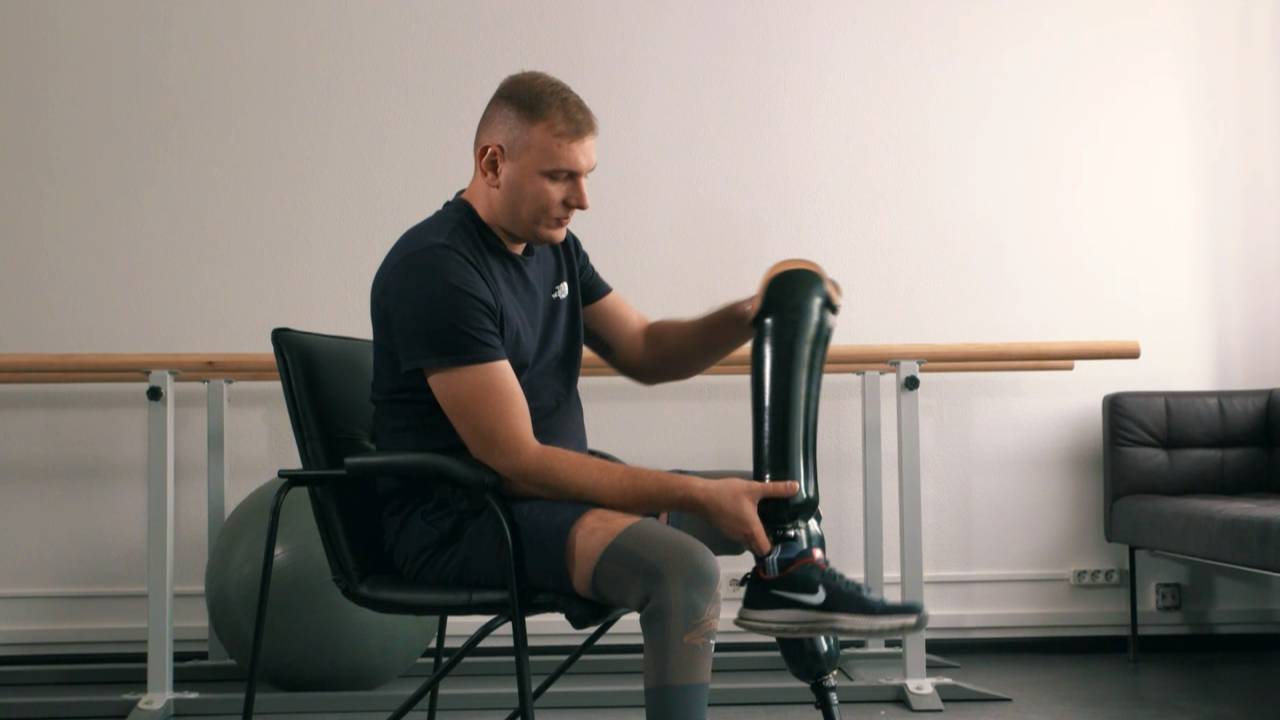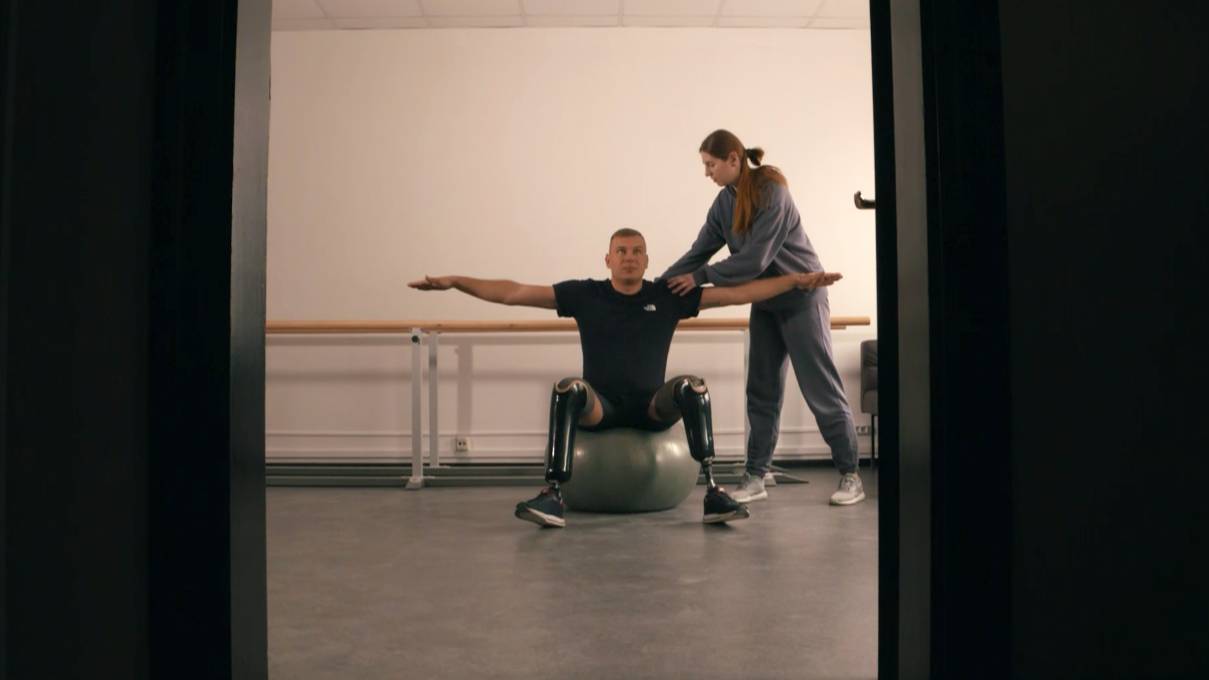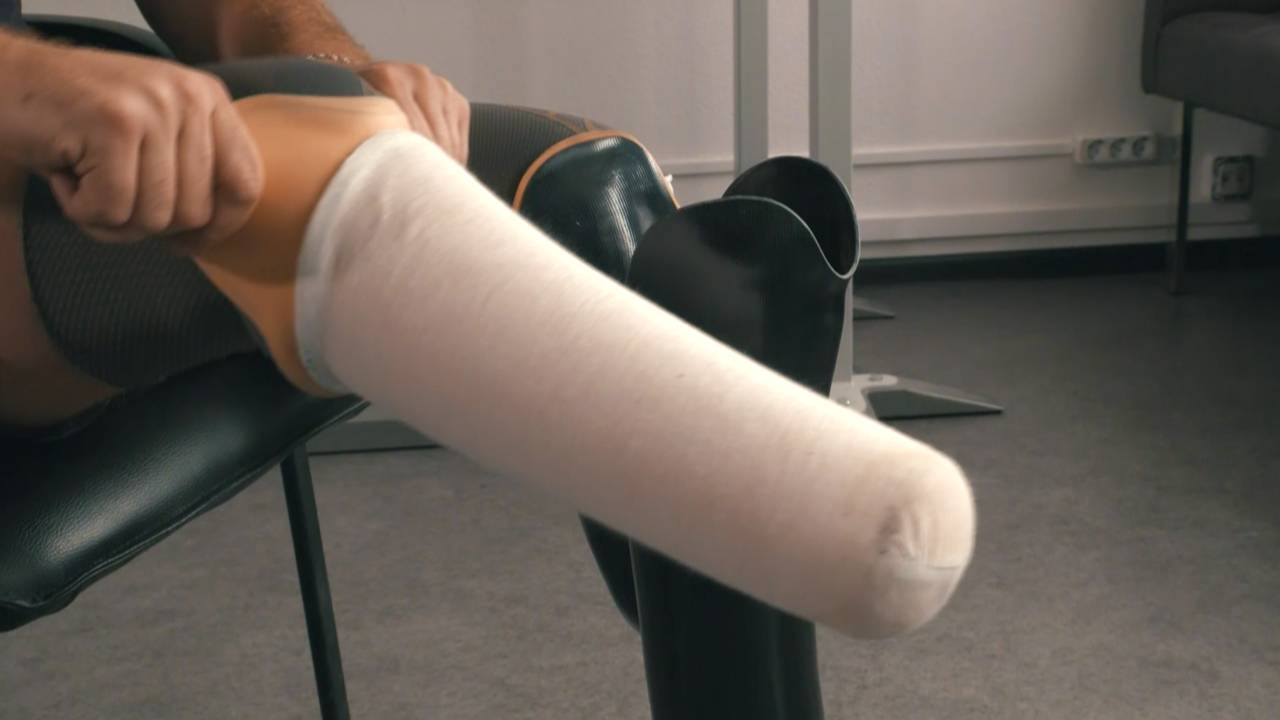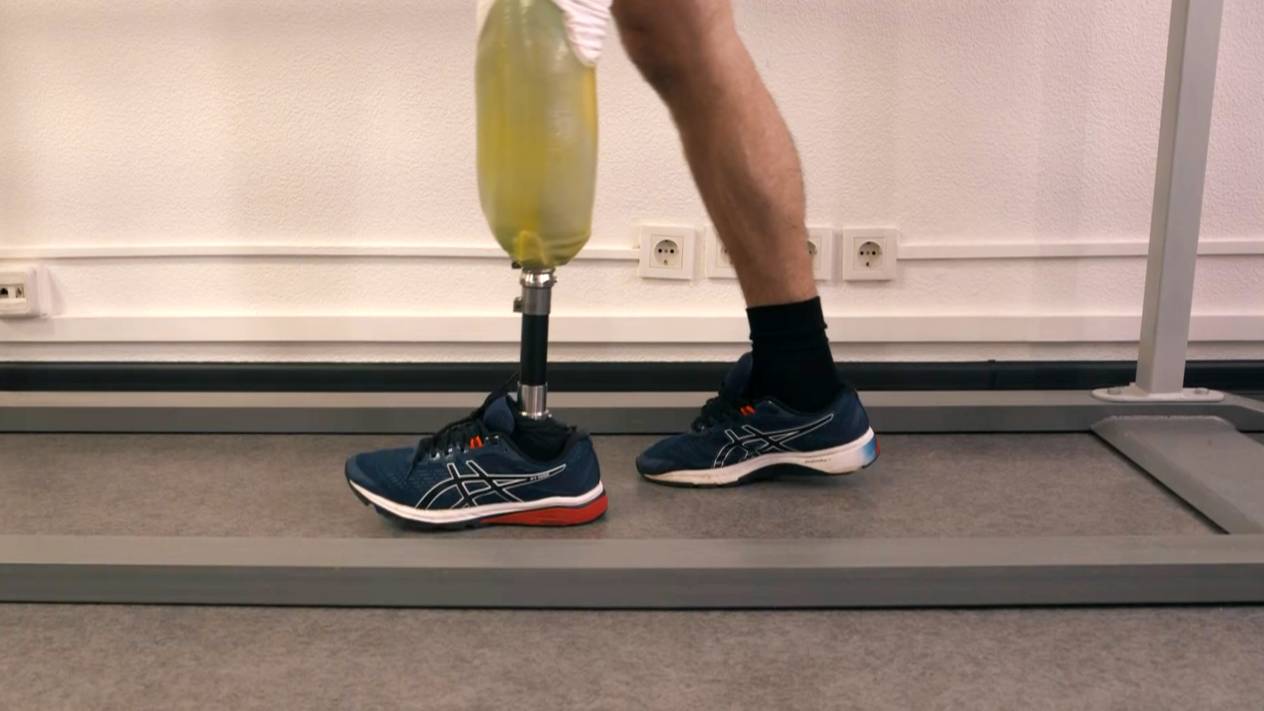
Ruslan Makohon lost both his legs last February after stepping on a mine, but prosthetics have given him another chance to walk. /CGTNEurope
Ruslan Makohon lost both his legs last February after stepping on a mine, but prosthetics have given him another chance to walk. /CGTNEurope
For any country, losing troops during a conflict is a cause for national mourning. But often, soldiers who sustain life-long injuries are not given the attention and care they deserve. It seems, however, that this is not the case in Ukraine.
Many of the country's soldiers have lost limbs while fighting Russian troops over the past 10 months. But rather than spend the rest of their lives in a wheelchair, specialist centers across the country are fitting them with prosthetic limbs that allow them to live normal lives - and in some cases even go back to the front line.
READ MORE:
Spanish police raid Europe's drug 'super cartel'
Banksy reveals new work in war-torn Ukraine
China's forgotten heroes

After being fitted with the prosthetics, he became convinced he could live normally again. /CGTNEurope
After being fitted with the prosthetics, he became convinced he could live normally again. /CGTNEurope
One such soldier is Ruslan Makohon. He lost both his legs last February after stepping on a mine. The 28-year-old had been clearing the explosives in the country's eastern Donetsk region.
At the time, he did not think he would survive. But after he discovered that he could be fitted with artificial legs, he started to regain hope.
"I thought I'd be in a wheelchair forever," he said, "but when I came to Kyiv I was told how prosthetics work. I became convinced I could live normally again. My state of mind improved. I couldn't wait to take my first steps."
Ruslan is among the hundreds of amputees who have been treated at nine government-funded centers across the country. Each has its own workshop on site, where the prosthetic limbs are constructed from start to finish.
The process begins with making measurements of the patient. A cast is then made from a mould, which is finally smoothed, polished and painted.

A cast is made from a mould of the stump, which is then smoothed, polished and painted. /CGTNEurope
A cast is made from a mould of the stump, which is then smoothed, polished and painted. /CGTNEurope
As one technician, Vsevolod Smaliy, explains, it is a job that requires patience and precision.
"The most responsible part of my job is working on the acrylic models because if the prosthetic is made incorrectly, you can't fix it later," he tells CGTN Europe.
"Each one needs to be adjusted individually. Sometimes there may be cases when the patient feels pain because he can feel his bone, so you need to pay close attention."
Vsevolod also explains that it can take between six months and a year for the shape of the patients' legs to stabilize and for the swelling to completely go down. When it does, he or she needs to be fitted with a new prosthetic. In the meantime, the temporary one can be adjusted using a small rotatable button.

Ukraine's physiotherapists teach the patients to walk again and strengthen their muscles. /CGTNEurope
Ukraine's physiotherapists teach the patients to walk again and strengthen their muscles. /CGTNEurope
The centers have physiotherapists at hand, whose job it is to teach the patients to walk again and strengthen their muscles through a series of training programs.
Physiotherapist Maria Yaremenko reveals that soldiers generally take to prosthetics quite easily.
"Fighters are usually between 18 and 40," she says. "Most of them are young. So it's easier to work with them because their rehabilitation is faster. Usually, they go back to fighting and the prosthetics don't hinder them."
That's exactly what Ruslan did. He was back to the front line in August. He says he often forgets he's even wearing prosthetics. And that he's back to doing everything he once loved.